This article needs additional citations for verification .(November 2007) |

The Buffalo Nine was a group of nine Vietnam War protesters who were arrested on August 19, 1968, at the Unitarian Universalist Church in Buffalo, New York.
This article needs additional citations for verification .(November 2007) |

The Buffalo Nine was a group of nine Vietnam War protesters who were arrested on August 19, 1968, at the Unitarian Universalist Church in Buffalo, New York.
During the Vietnam War there was a rise in draft resistance as a political statement. A group of students, primarily associated with the University at Buffalo, had been active against the draft and the war. [1] [2] [3] [4] When they and supporters sought sanctuary in the Unitarian church on Elmwood Avenue, U.S. Marshals, FBI agents, and Buffalo Police surrounded the church. The minister, Dr. Paul Carnes, was out of the country in Romania during this time. Eventually, the lawmen "stormed" the church. [5] When the group of lawmen entered the church, they used blackjacks to "clear the aisle". Bruce Beyer, a leader of the Buffalo Draft Resistance Union, was arrested, as were seven others, on charges including draft evasion and assaulting an officer. Others arrested included prominent campus radicals Carl Kronberg and Jerry Gross. A later investigation led them to arrest Students for a Democratic Society organizer Bill Yates. [6] [1] [2] [7] [8]
The first federal trial began in February, 1969. Around 150 University of Buffalo students and faculty picketed the U.S. Courthouse, chanting "Free the Nine - The Trial's a Crime." [4] [1] The defendants and their lawyers used the trial as an organizing tool. Beyer, Gross, and Kronberg and the other defendants informed the court that it was necessary to resist an "immoral, illegal, racist, politically insane war on the Vietnamese people." The jury was unable to reach a verdict on several of the defendants but Bruce Beyer was convicted and received a three-year sentence. [6] [9]
At the second trial, Malak, Yates, and Berry angered the judge and others by raising their fists in power salutes when introduced to the court, guaranteeing a contentious atmosphere. Malak and Yates drew contempt of court citations for refusing to stand as the judge left for a recess. In the end, Berry and Kronberg were acquitted, but Malak and Yates were convicted. [10] The jury was unable to arrive at a verdict on Jerry Gross and the government decided to drop his case. Malak and Yates were sentenced to three years' imprisonment. [6]
The series of trials occupied the attention of the university and city. [1] The Buffalo Nine Defense Committee was formed, publishing its own newsletter, Liberated Community News, out of the Urban Action offices, publishers of "The Buffalo Broadside" newsletter, as well as a printing facility for various student newspapers. [11] [6] In October 1968 this office was raided by Buffalo Police, based on an accusation that a foot patrolman had been threatened with violence, an action that drew protest from the Buffalo ACLU over police use of violence. [6] During that raid six men were arrested, three on the street corner and three inside the offices, and charged with various misdemeanors, all of which were later dropped or reduced to disorderly conduct. [11] Of those arrested only Kronberg had any relationship to the Buffalo Nine. [11]
Another contemporaneous political trial, of great significance to the Buffalo Nine defendants and the larger community, was that of Martin Sostre, owner of the Afro-Asian Bookstore in Buffalo's Black ghetto. Sostre was arrested on riot and drug charges and Jerry Gross became the Chairman of the Martin Sostre Defense Committee.

A symposium in September 1968 to discuss the Buffalo Nine case drew prominent New York City intellectuals such as Susan Sontag. [6]
When Beyer was convicted the UB campus erupted into violent protests. Hundreds of students stormed the campus and set fire to buildings that housed a US Navy research project. [4] [2] [1] Others entered Hayes Hall and climbed to the top of its bell tower, ringing its bells continuously to be heard across campus. [5] [4]
"What started out as a peaceful, non-violent demonstration against the war and the Selective Service System, ended in a violent fist-swinging melee. I maintain to this day that this was precisely what the government had in mind when it sent thirty-two police officers to arrest two draft resisters ..." (Bruce Beyer) [12]
An article appeared in the Magazine Section of the Buffalo Evening News, December 18, 1988, with extensive detail about the case and also covering the 20-year reunion, in Buffalo, of some of the defendants.

Philip Francis Berrigan was an American peace activist and Catholic priest with the Josephites. He engaged in nonviolent, civil disobedience in the cause of peace and nuclear disarmament and was often arrested.

Jerry Clyde Rubin was an American social activist, anti-war leader, and counterculture icon during the 1960s and early 1970s. Despite being known for holding radical views when he was a political activist, he ceased holding his more extreme views at some point in the 1970s and instead opted for a successful career as a businessman. In the 1960s, during his political activism heyday, he was known for being one of the co-founders of the Youth International Party (YIP) whose members were referred to as Yippies, and standing trial in the Chicago Seven case.
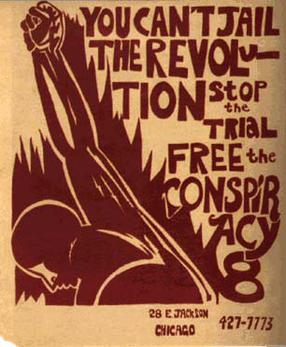
The Chicago Seven, originally the Chicago Eight and also known as the Conspiracy Eight or Conspiracy Seven, were seven defendants – Rennie Davis, David Dellinger, John Froines, Tom Hayden, Abbie Hoffman, Jerry Rubin, and Lee Weiner – charged by the United States Department of Justice with conspiracy, crossing state lines with intent to incite a riot, and other charges related to anti-Vietnam War and 1960s counterculture protests in Chicago, Illinois during the 1968 Democratic National Convention. The Chicago Eight became the Chicago Seven after the case against codefendant Bobby Seale was declared a mistrial.
The Seattle Liberation Front, or SLF, was a radical anti-Vietnam War movement, based in Seattle, Washington, in the United States. The group, founded by the University of Washington visiting philosophy professor and political activist Michael Lerner, carried out its protest activities from 1970 to 1971. The most famous members of the SLF were the "Seattle Seven," who were charged with "conspiracy to incite a riot" in the wake of a violent protest at a courthouse. The members of the Seattle Seven were Lerner, Michael Abeles, Jeff Dowd, Joe Kelly, Susan Stern, Roger Lippman and Charles Marshall III.

Rennard Cordon Davis was an American anti-war activist who gained prominence in the 1960s. He was one of the Chicago Seven defendants charged for anti-war demonstrations and large-scale protests at the 1968 Democratic National Convention in Chicago. He had a prominent organizational role in the American anti–Vietnam War protest movement of the 1960s.

Opposition to United States involvement in the Vietnam War began in 1965 with demonstrations against the escalating role of the United States in the war. Over the next several years, these demonstrations grew into a social movement which was incorporated into the broader counterculture of the 1960s.
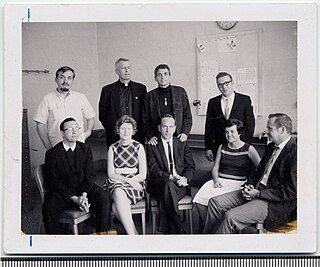
The Catonsville Nine were nine Catholic activists who burned draft files to protest the Vietnam War. On May 17, 1968, they took 378 draft files from the draft board office in Catonsville, Maryland, and burned them in the parking lot.

Jerry Ross is an American painter.
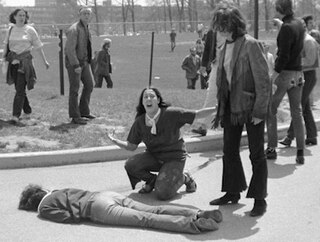
The Kent State shootings were the killing of four and wounding of nine unarmed college students by the Ohio National Guard on the Kent State University campus. The shootings took place on May 4, 1970, during a rally opposing the expanding involvement of the Vietnam War into Cambodia by United States military forces as well as protesting the National Guard presence on campus and the draft. Twenty-eight National Guard soldiers fired about 67 rounds over 13 seconds, killing four students and wounding nine others, one of whom suffered permanent paralysis. Students Allison Krause, 19, Jeffrey Miller, 20, and Sandra Scheuer, 20, died on the scene, while William Schroeder, 19, was pronounced dead at Robinson Memorial Hospital in nearby Ravenna shortly afterward.

The nationwide student anti-war strike of 1970 was a massive outpouring of anti-Vietnam War protests that erupted in May of 1970 in response to the expansion of the war into neighboring Cambodia. The strike began on May 1 with walk-outs from college and high school classrooms on nearly 900 campuses across the United States. It increased dramatically following the shooting of students at Kent State University in Ohio by National Guardsmen on May 4. While a number violent incidents occurred during the protests, for the most part, they were peaceful.
The 1960s Berkeley protests were a series of events at the University of California, Berkeley, and Berkeley, California. Many of these protests were a small part of the larger Free Speech Movement, which had national implications and constituted the onset of the counterculture of the 1960s. These protests were headed under the informal leadership of students Mario Savio, Jack Weinberg, Brian Turner, Bettina Aptheker, Steve Weissman, Art Goldberg, Jackie Goldberg, and others.
Mitchell Goodman was an American writer, teacher, and activist. He is best known for his role in the Vietnam draft resistance movement, which drew the high-profile 1968 federal prosecution of the "Boston Five."
Roger Henry Lippman is an American political activist. He was a member of the anti-Vietnam War groups Students for a Democratic Society (SDS) and the Seattle collective of Weatherman. He is most commonly noted as a member of the Seattle Seven, who was accused of, and tried for, conspiracy charges in 1970.
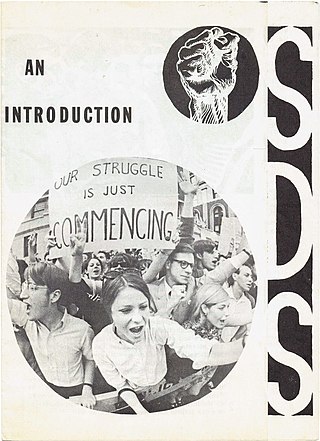
Students for a Democratic Society (SDS) was a national student activist organization in the United States during the 1960s and was one of the principal representations of the New Left. Disdaining permanent leaders, hierarchical relationships and parliamentary procedure, the founders conceived of the organization as a broad exercise in "participatory democracy". From its launch in 1960 it grew rapidly in the course of the tumultuous decade with over 300 campus chapters and 30,000 supporters recorded nationwide by its last national convention in 1969. The organization splintered at that convention amidst rivalry between factions seeking to impose national leadership and direction, and disputing "revolutionary" positions on, among other issues, the Vietnam War and Black Power.
Andrew Dean Stapp was an American activist known for forming the American Servicemen's Union, an unofficial union for the U.S. military, in opposition to the Vietnam War.
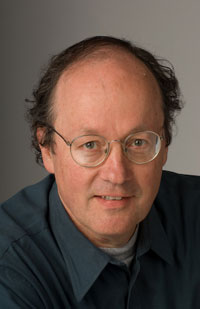
Michael Kelvin Ferber was the youngest of the five defendants in the federal anti-draft trial in the spring of 1968 in Boston, Massachusetts. The trial attracted national attention because one of the defendants was Dr. Benjamin Spock, the well-known pediatrician and author of the best-selling The Common Sense Book of Baby and Child Care. The other defendants were the Rev. William Sloane Coffin, Jr., chaplain of Yale University; Mitchell Goodman, novelist and teacher; and Marcus Raskin, a lawyer who served briefly on the U.S. National Security Council under Kennedy and co-founded the Institute for Policy Studies. The trial was known as "The Spock Trial" and the defendants as "The Boston Five".
The Milwaukee Fourteen were fourteen peace activists who burned Selective Service records to protest the Vietnam War. On 24 September 1968, they entered Milwaukee's Brumder Building, site of nine Wisconsin draft boards, gathered up about 10,000 files, carried them to an open public space, and set them on fire with homemade napalm. The fourteen then remained at the site, singing and reading from the gospels of John and Luke as Milwaukee firemen and police officers arrived. The subsequent trial of twelve of the protestors became the first resistance trial in which the defendants chose to represent themselves. After a trial of eleven days, the defendants were each found guilty of theft, arson, and burglary.
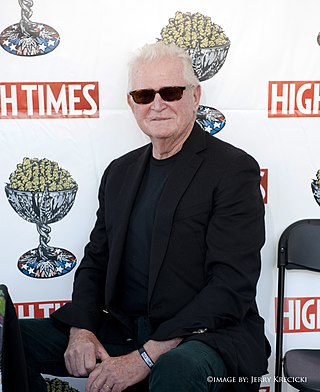
Michael John Kennedy was an American criminal defense attorney, expert in U.S. Constitutional law, and a civil rights advocate who defended cases for the American Civil Liberties Union (ACLU), the Center for Constitutional Rights (CCR), the National Emergency Civil Liberties Committee (NECLC) and in his private practice. Kennedy, who tried cases in 36 states, was a member of the National Lawyers Guild and the State Bar in California and New York.
Eugene has a long history of community activism, civil unrest, and protest activity. Eugene's cultural status as a place for alternative thought grew along with the University of Oregon in the turbulent 1960s, and its reputation as an outsider's locale grew with the numerous anarchist protests in the late 1990s. According to the Chicago Tribune, the city was called a "cradle to [the] latest generation of anarchist protesters." Occupy Eugene was home to one of the nation's longest-lasting Occupy protests in 2011, with the last protester leaving the initial Occupy camp on December 27, 2011. The city received national attention during the summer of 2020, after Black Lives Matter protests in response to the murder of George Floyd grew violent.